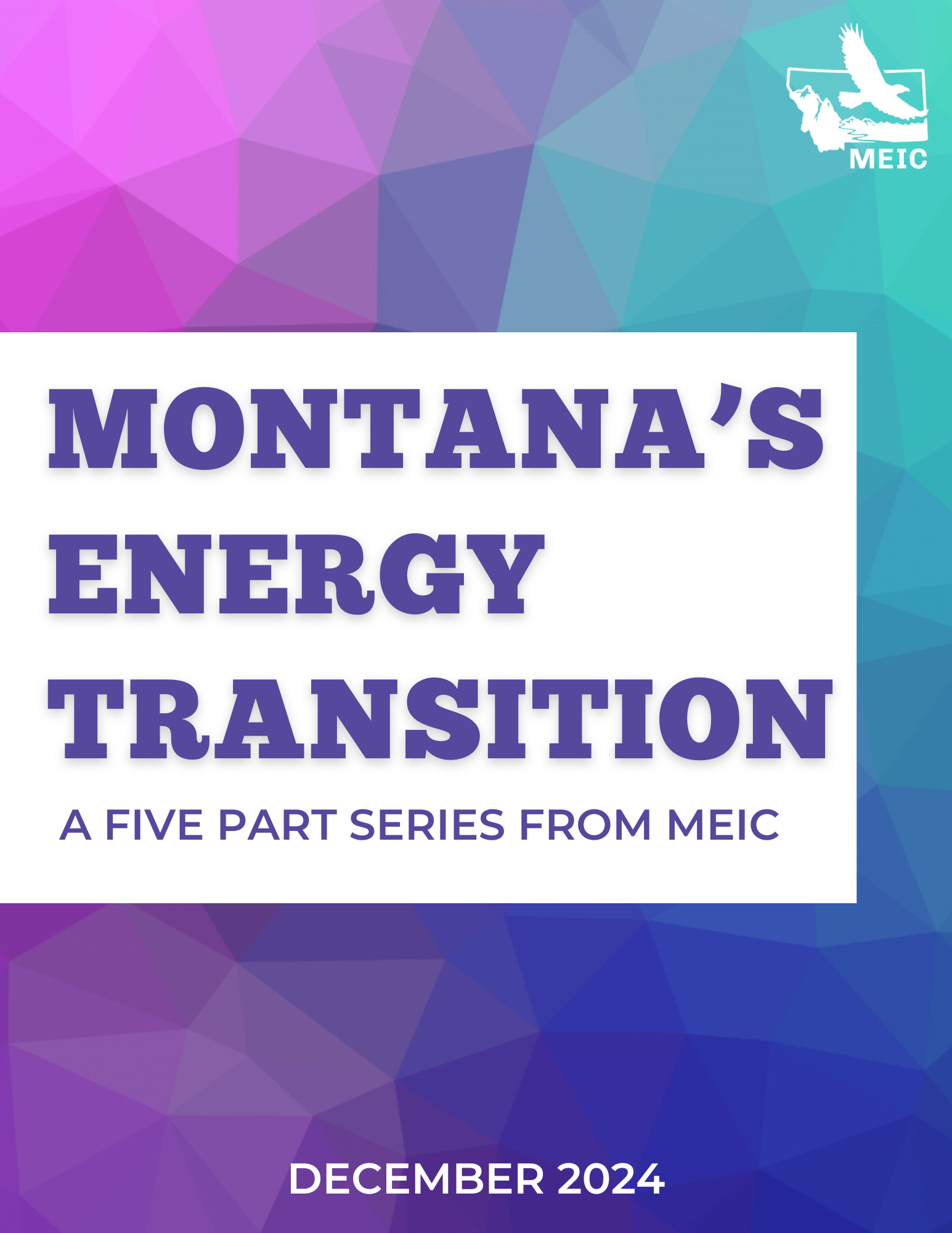
By Nick Fitzmaurice
Climate change is the greatest challenge of our time, driven by unprecedented atmospheric concentrations of carbon dioxide (CO2) and other greenhouse gases as a result of human activities since the Industrial Revolution. Access to abundant fossil fuel energy has made modern technological development possible, but there are dire consequences to this energy consumption. Addressing the climate crisis does not mean shutting off the power, but it does mean a complete overhaul of the energy systems that modern societies and institutions are built upon.
As a net energy exporter positioned with disproportionate access to untapped fossil fuel reserves, Montana is key in the fight against climate change. This is not just about deploying clean energy infrastructure; this is a transformation of the entire energy system. Decarbonizing Montana’s energy systems is no doubt a transition of great proportion, but it can and must be done to avert the greatest impacts of the climate crisis. Engineers and regulators must abandon antiquated practices, facing the possibilities of this new energy age with open minds. Montanans can lead the charge.
Of Montana’s energy-related CO2 emissions, nearly 45% come from electric power generation, followed by nearly 30% from transportation, over 15% from industrial processes, and the remaining 10% from commercial and residential heating and cooking. Nationally, about 75% of all anthropogenic greenhouse gas emissions (CO2, methane, nitrous oxide, hydrofluorocarbons, etc.) result from combusting fossil fuels for energy, including over 90% of the U.S.’s total CO2 emissions. All sources of greenhouse gas emissions must be curtailed but, as the largest contributor, energy presents the greatest opportunity to lessen anthropogenic emissions.
Decarbonizing Montana’s energy system will require a highly coordinated effort and the concurrent achievement of several interrelated transformations. To meet energy demand cleanly, energy electrification, demand-side management, and electricity decarbonization are all necessary. Expanding transmission infrastructure and implementing power sharing across the West will also be essential to reliably connect clean energy production to consumers (see article on pg. 18). The Federal Inflation Reduction Act and the Infrastructure Investment and Jobs Act (IIJA) have opened substantial federal funding avenues for Montana to facilitate these transformations.
Accelerating this energy transition is the directive of my position as MEIC’s Energy Transition Advocate. This is a big topic, so I will be unpacking the Montana Energy Transition in installments, starting with energy electrification.
Electricity can be sourced through both carbon-intense and carbon-free means, but carbon-based liquid and gas fuels such as methane and petroleum inherently release CO2 upon combustion. Viable options for generating clean electricity exist today, so all energy uses must be electrified to rapidly decarbonize the Montana energy system. Electrification targets three general areas: Residential & Commercial Heating, Transportation, and Industry.
Residential & Commercial Heating
Gas is often used in commercial and residential buildings for space heating, water heating, and cooking. Heat pumps are an extremely efficient alternative that can electrify both space- and water-heating needs, while electric induction stoves are an excellent solution to most efficiently replace gas in cooking applications.
Heat pump technology can be deployed to recycle thermal energy between neighboring buildings (“clean energy districts”) by using the ground and other available “sinks” as thermal batteries. Montana State University (MSU) has pioneered this technology in the state, deploying several energy districts that connect campus regions with ground-source heat pumps. MSU faculty have also been involved in retraining oil and gas drilling operators across the state to drill boreholes for ground-source heat pumps.
Industry
Across the U.S., industries such as cement production and steel manufacturing burn fossil fuels on-site to achieve extremely high temperatures for their processes. Alongside power generation and petroleum refineries, cement production and associated processes are among the largest point sources of greenhouse gas pollution in Montana. Industrial cement production and lime manufacturing at three sites across the state are collectively responsible for nearly one million metric tons of CO2 equivalent emissions annually (2% of total state emissions). Aluminum production is another industry using direct fossil fuel heat, but Montana’s only aluminum smelter closed in 2009. Electrifying these industries is a challenge, but Antora Energy is developing solid-carbon batteries that can be charged with clean electricity for just these industrial heating applications. (Chemical processes in industrial manufacturing, such as cement clinker calcination, emit greenhouse gases not associated with energy use. These must be addressed separately.)
Transportation
Electrifying transportation is a hot topic these days as car manufacturers roll out growing electric vehicle fleets. This electrification eliminates the need for petroleum-based fuels used in combustion engines.
Phasing out the combustion engine does not stop at the single-occupancy vehicle. Additional progress can be realized toward addressing the climate crisis through expanded access to public transportation such as electric buses and electric passenger rail. The Big Sky Passenger Rail Authority was recently established to advocate for the revival of abandoned rail service in the state, particularly across southern Montana. Federal funding is explicitly set aside in the IIJA to improve passenger rail in the U.S. Freight and cargo shipping vehicles must also be electrified (see article on Montana’s Energy Transition).
This article was published in the December 2023 issue of Down To Earth.


